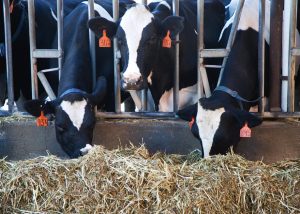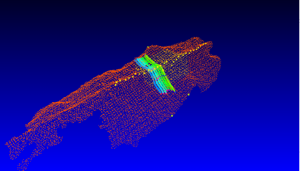Fernando Diaz
This article was presented in the V Jornada FEDNA-ANEMBE held in Madrid on November 7th, 2019.
Robotic milking
Milking is a predictable physical task that can be automatized easily. The milking center is the heart and center of a dairy, and yet labor intensive normally working almost 24-7 year-round. This, coupled with a challenged workforce, makes the milking center one of the most difficult areas to manage in larger dairy farms. In addition, potential communication and cultural barriers can complicate the relationship between dairy owners, managers and employees. For these reasons, robotic milking is becoming popular in dairy farms. It has been reported there are over 35,000 robotic units on farms worldwide.
The University of Minnesota Extension team reported that the top 3 reasons for installing a milking robot were improved lifestyle, reduced hired labor, and the ability to grow without additional hired labor. Along with feeding the cows, cleaning the facilities, and taking care of cow’s health and reproduction, fetching cows is one of the main task in robotic dairies. It has been reported that, on average, 8% of the cows must be fetched to the robots, and dairy workers spent 51 min/day/robot fetching cows.
Performance efficiency in robotic dairies
Three recent studies published in the Journal of Dairy Science evaluated the performance efficiency of automatic milking systems in North American dairy farms. In the first study, researchers from the School of Veterinary Medicine at the University of Wisconsin-Madison surveyed 635 dairy farms with robotic milking located mainly in the Midwest United States (Minnesota and Wisconsin), southern Ontario (between Detroit and Toronto), and lower Quebec (between Ottawa and Quebec City). The researchers (Tremblay et al., 2016) analyzed a data set including 54,065 observations collected from weekly observations over a 4-year period (2011–2014). In summary, average performance was:
- Milk production per cow: 32.7 kg/day
- Cows per robot: 50.5
- Milk production per robot: 1,666 kg/day
- Concentrate consumed in the robot: 5.18 kg/day
- Concentrate refused in the robot: 7.7%
- Milkings per cow: 2.9/day
- Minutes in the robot: 6.8/milking
Similarly, in the second study, Canadian researchers (King et al., 2016) analyzed a data set collected from 41 commercial dairy farms with robotic milking systems (26 Ontario/15 Alberta) from October 2014 to June 2015. These were the average robot and cow performance:
- Milk production per cow: 34.5 kg/day
- Cows per robot: 49.4
- Milk production per robot: 1,685 kg/day
- Milkings per cow: 3.0/day
- Involuntary milkings: 10.4%
- Fetched cows: 8.1%
In the third work conducted by University of Minnesota researchers (Siewert et al., 2018) included 33 dairies located in Minnesota and Wisconsin. These were the production data:
- Milk production per cow: 33.2 kg/day
- Cows per robot: 55.8
- Milk production per robot: 1,861 kg/day
- Concentrate consumed in the robot: 5.01 kg/day
- Concentrate refused in the robot: 0.27 kg/day
- Milkings per cow: 2.8/day
- Minutes in the robot: 7.5/milking
In addition, the authors in this study found that the amount of offered concentrate in the robot was positively associated with daily milk production. They stated that dairies feeding more concentrate generally were obtaining more milk per cow. Considering the results from these three experiments, we can indicate, that, on average, cows in robotic dairies are being milked 2.9 times per day and they are consuming 5.1 kg of concentrate (1.76 kg/visit). Since average milking time in the robot is 7.17 minutes per milking, concentrate eating rate is 0.26 kg/min.
Since cows are fed via a pelleted feed offered in the robot during milking, feeding cows in box robotic dairies is significantly more expensive than feeding a total mix ration (TMR) in conventional farms.
Concentrate supply
A recent survey conducted by University of Minnesota researchers evaluated management factors associated with cow performance in robotic dairies. The survey included 33 dairies located in Minnesota and Wisconsin, and the amount of concentrate offered in the robots averaged 5.01 ± 0.84 kg/cow. The authors (Siewert et al., 2018) found that the amount of concentrate offered in the robot was positively associated with daily milk yield, with farms offering more concentrate generally obtaining more milk production.
It has been suggested that providing a greater quantity of concentrate within the robot increases milking frequency. Three studies conducted in the Rayner Dairy Research and Teaching Facility at the University of Saskatchewan (Saskatoon, SK, Canada) evaluated the effects of the amount of concentrate offered on cow performance, intake and milking activity:
- In the first study, the authors (Hare et al., 2018) fed 2 diets: a high-energy TMR with 0.5 kg of concentrate in a dry matter (DM) basis provided in the robot or a low-energy TMR with 5.0 kg of concentrate consumed in the robot. Total DM intake was 2.7 kg greater for cows fed the high-energy TMR (26.3 kg; 0.5 kg concentrate + 25.7 kg TMR) than the low-energy TMR (23.6 kg; 5.0 kg concentrate + 18.6 kg TMR). Milking frequency was not affected by treatment with cows attending to the robot 3.0 times per day. Although milk production and milk composition were similar, cows receiving less concentrate in the robot gained more weight.
- In the second study, Menajovsky et al. (2018) evaluated the effects of the quantity of concentrate offered (2 vs. 6 kg) in both low- (54% forage) and high-forage diets (64% forage). Cows receiving more concentrate in the robot (6.1 vs. 2.0 kg/day) consumed less TMR in the feedbunk (21.4 vs. 24.9 kg/d); however, in this study total DM intake and milking frequency were not affected by treatment, averaging 27.3 kg/d and 3.6 times/d, respectively. Moreover, milk yield was similar (38.6 kg) regardless of concentrate supply in the robot or forage content in the diet.
- Finally, in the third study the researchers (Paddick et al., 2019) tested 4 concentrate amounts offered in the robot (0.50, 2.00, 3.49, and 4.93 kg of DM/day). Although intake of the TMR decreased linearly as the quantity of concentrate in the robot increased, total DMI intake was not affected by the amount of concentrated allocated in the robot, averaging 25.3 kg/d. Milking frequency (3.2 visits/d), milk yield (37.4 kg/d), milk fat (1.43 kg/d), and milk protein (1.22 kg/d) were not different among treatments.
The results of these works indicate that limiting the allocation of concentrate in the robot box does not affect cow intake, milk yield and milk components production, and voluntary attendance to the robot.
Applications
In conclusion, in robotic dairies, the concentrate should meet the following requirements: 1) be palatable so cows are motivated to enter the robot box; 2) have adequate presentation form (pellet or texturize) to maximize eating rate and reduce refusals, and 3) in combination with the feedbunk ration, it must supply nutrients to guarantee high production of milk and milk components.
References
- Hare, K., T.J. DeVries, K.S. Schwartkopf-Genswein, and G.B. Penner 2018. Does the location of concentrate provision affect voluntary visits, and milk and milk component yield for cows in an automated milking system? Can. J. Anim. Sci. 98: 399–404.
- King, M. T. M., E. A. Pajor, S. J. LeBlanc, and T. J. DeVries. 2016. Associations of herd-level housing, management, and lameness prevalence with productivity and cow behavior in herds with automated milking systems. J. Dairy Sci. 99:9069–9079.
- Manyika, J., M. Chui, M. Miremadi, J. Bughin, K. George, P. Willmott, M. Dewhurst. 2017. Un futuro que funciona: Automatización, empleo y productividad. McKinsey & Company.
- Menajovsky, S. B., C. E. Walpole, T. J. DeVries, K. S. Schwartzkopf-Genswein, M. E. Walpole, and G. B. Penner 2018. The effect of the forage-to-concentrate ratio of the partial mixed ration and the quantity of concentrate in an automatic milking system for lactating Holstein cows. J. Dairy Sci. 101:9941- 9953.
- Paddick, K. S., T. J. DeVries, K. Schwartzkopf-Genswein, M. A. Steele, M. E. Walpole, and G. B. Penner. 2019. Effect of the amount of concentrate offered in an automated milking system on dry matter intake, milk yield, milk composition, ruminal digestion, and behavior of primiparous Holstein cows fed isocaloric diets. J Dairy Sci. 102: 2173-2187.
- Siewert, J. M., J. A. Salfer, and M. I. Endres. 2018. Factors associated with productivity on automatic milking system dairy farms in the Upper Midwest United States. J. Dairy Sci. 101:8327–8334.
- Tremblay, M., J. P. Hess, B. M. Christenson, K. K. Mclntyre, B. Smink, A. J. van der Kamp, L. G. de Jong, and D. Döpfer. 2016. Factors associated with increased milk production for automatic milking systems. J. Dairy Sci. 99:3824–3837.
About the author
Fernando Diaz is the Dairy Knowledge Center’s Director. Dr. Diaz works as an independent Dairy Nutrition and Management Consultant. He provides consultation to dairies and feed companies including nutrition and feeding management, forage and crop plans, and research and product development of new feedstuffs, additives and technologies for dairy cows. Fernando lives in Brookings, South Dakota and can be reached at fernando@dairykc.com.
© 2020 Dairy Knowledge Center. All Rights Reserved.









